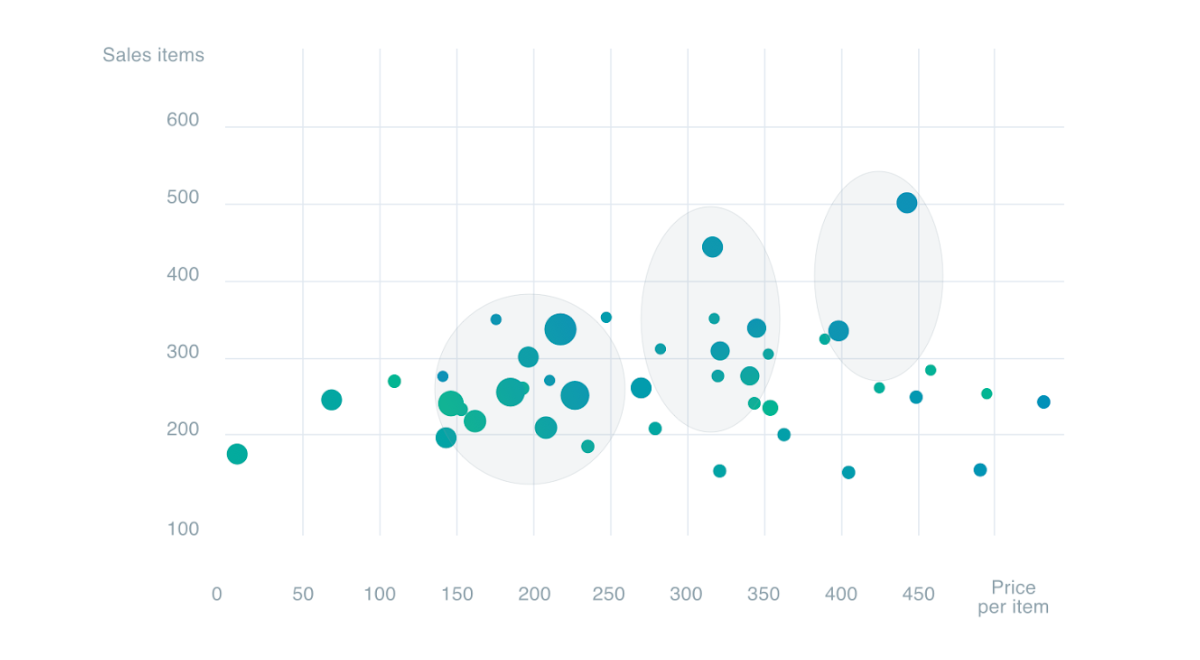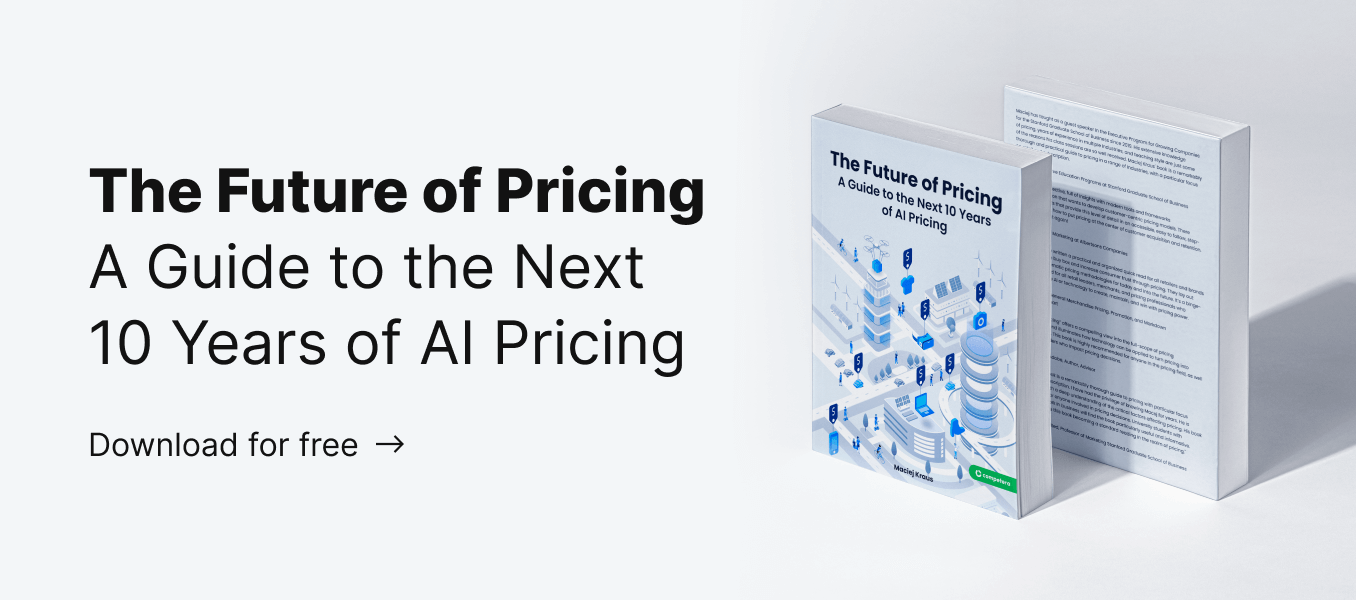Content navigation:
- Price point definition
- How to approach pricing point concept?
- What are price thresholds and why they're important?
- How price points work + 7 ideas
- How to determine price point: run a test
- Harness advanced pricing solutions
- Price point analysis: raise the bar
- How to find entry pricing point: use a skimming model
- Price points strategy: mind the price perception
- Bundle up to find price points in retail
- Monitor your prices
What is a price point?
Price points mark the correlation between the demand and supply curves.
Price point analysis enables retailers to verify that their prices are both attractive for consumers while also generating maximum possible profit for the business; price point analysis helps to evaluate the efficiency of the pricing policy on portfolio level and designate the weak points and money leakages.
Now, another definition: a retail price that allows keeping a relatively high demand for a product is called a price point. Put otherwise, it is the point where you are making the most. There’s no sense losing money by compromising on service or downsizing the figures when customers are ready to pay more. On the other hand, we do not want to let our sales slip by setting too high and steer demand curve into a deep nosedive.
How to approach pricing point concept?
Now that we know the price point meaning, let's take a deeper dive into the topic.
First, you need a definition for the “elasticity function”, it will imply finding the price points which may precisely predict demand, i.e. the amount of items of a product which may be sold at different prices, and increase the parameter of your choice, be it revenue, volume, or profit. Being aware of pricing point is recognized essential to give the right answer to the question: 'How to price a product for retail'.
Most of the sellers don’t bother with retail pricing strategies too much. They simply point toward a median value of competitors’ prices. Seemingly logical, this feeble attempt won't bring you substantive results. To play big and sell above the average, we need to go for a more robust solution based on effective price points strategy.

What are price thresholds and why they're important?
Threshold price point implies psychological linking of prices to entice shoppers up to a particular threshold so buyers are paying the maximum acceptable price while remaining loyal to the shop. The concept of price threshold is closely linked with the idea of price points. It can be used as a powerful means used by retailers to maximize revenue and reinforce customer loyalty.
How price points work
To calibrate the price, define it reasonable and gain competitive advantage, retail players got to be ready to test it back and forth, making adjustments if needed. Although pricing has never been a hard science, it does look like a discipline where you constantly calculate and scheme.
There’s a range of attributes to be recognized while establishing the higher price:
- the amount that market can pay at the moment;
- a position of your company;
- how much your rivals charge;
- volumes that you can supply;
- how eagerly sought your product is as compared to competitors;
- a number of other external factors.
You're right if you think the task is somewhat challenging and time-consuming. However, there's good news too. First and foremost, these efforts will definitely pay off. Smart pricing tactic will always meet the objectives and help you get some business done. By and large, it is the price that predetermines a demand for the product. Remember: it's good to know what are price points, but you must implent insights practically to gain the result.
Besides, you aren't left out in the cold, since there are automated solutions to dispatch a pricing mission while you are performing other tasks. Automated pricing process is the key to sustainable price points management in retail domain.
So, how to price a product for retail? There dozens of approaches to manage price points effectively, let's look at some useful ideas for better service you can try using right now.
1. How to determine price point: run a test
To know what you’re clients are actually expecting
Very basic A/B testing in retail is a great example of a simple, yet powerful tool. No wonder this technique has been around for many years with popularity spanning into our days.
Demonstration of two different price tags and analysis of how people react to them is a perfect opportunity to see the situation from clients' perspective. This way you do not rely on the experience of other players (which may not be truly satisfactory, after all), but trail your unique path in price points strategy.
2. Harness advanced pricing solutions
To avoid human-made errors and save time
A/B testing won’t cause much trouble, as it is one of those things that have gone digital. Testing prices and figuring out your perfect deals might not be easy, but not when you employ appropriate digital aid.
Impactful, scalable and safe, a professional software includes more features a single human brain can ever keep track of. Utilizing soft is the most reliable and explicit solution at every stage of the process. Market research, ongoing adjustments, and data harvesting have been computerized to save tons of time and avoid variable errors. Applying this data, retailers can adjust their merchandise mix and proactively respond to market changes.
Numbers speak better than words. And you may check the case of Wiggle Chain Reaction Cycle to define how advanced pricing automation solution can reduce the repricing time by 50% while providing a retailer with a comprehensive market vision.
Determining the initial price points marketing strategy is still up to us, so let’s dig deeper.
3. Price point analysis: raise the bar
Price point analysis enables sellers to set final shelf prices. The properly identified price points allows businesses to maximise profits while keeping consumers loyal.
To optimize prices step by step and explore the price perception
Raising the bar is always fun, no matter what you mean by it. Improving quality? Great! Marking up prices? Awesome!
As a matter of fact, rising price model is another popular approach to grope for the better price that will let you sell more efficiently and in larger quantities. It works really well for sellers who are a bit far from being sure what their margin is. And that’s how you do it.
Let’s say, you offer a product X for $5 for first 5 or 10 people. Then you go up by $5 and sell another small batch at this price. Now it’s time to jump again. Needless to say, leap values don’t have to stay the same. And so on, and so forth.
This method has proven to be effective due to a range of reasons:
- it gives you a great start to newcomers;
- it’s a great chance to take a look at customer preferences on the way to optimal figures;
- it works like a bargain-sale and triggers a feeling of urgency.

4. How to find entry pricing point: use a skimming model
To set optimal prices for the new products on the market
Think that only small and mid-sized businesses are musing over how to find price point that maximizes revenue? Well, major players do the same since there’s no real alternative to walking your own way.
Software and hardware products domain make up a good paradigm. Once brought to the market, Sony PlayStation 3 was on sale and (eagerly purchased) for $599. As the supply increased, the console started losing some of its competitive ability, which is a natural process. Eventually, the cost went down to just $299 on sale so it could face the competition.
As you see, skimming is a far cry from the rising model. To embrace this kind of strategy and go far upstream, the product should have good supply and be nothing but top-notch. However, skimming the cream off is worth strivings. And, to choose between two strategies, you really have to consider the competitive environment and your personal value in it.
Anecdotally, the truth is always someplace in between. Know what are price points, stay flexible, and respond to the variables of the market. And to the supply stock, as dollar rate is always the point.
5. Price points strategy: mind the price perception
To make sure your customer will remain loyal
We now understand what pricing is all about for us as vendors. But what does price points marketing strategy mean for consumers? Ultimately, it is the deal they have to be comfortable with. Unfortunately, sometimes this benchmark is drastically ambivalent.
Imagine that you’ve won $2,000 in some kind of contest. Sounds good, right? You might be feeling excited about a sudden gain, no matter how sizable this amount is in the light of your spending habits. But then you get to know that there were other prizes, with $5,000 and $10,000 payoffs. And now see your feelings change…
The thing is, our perception of the world is highly subjective, and shopping deeds are of no exception. That’s why discounts commonly run slick. Sale, bonuses and slashed prices jazz up our rush to buy. Whenever we see that “only $59.99” and realize that the regular price is much higher, acceptance angle changes, and so does our card balance.
Get to know what influences the price perception the most in this article.
6. Bundle up to find price points in retail
To propose your customer great deals and increase the brand awareness
Strategies for finding a product price point include package deals. While adding value to both customer experience and bottom lines, we explore the true worth of products and art of bundling.
Against the odds, not every bundle on the list is supposed to be sold. Some of them are meant to encourage prospects to buy… other entries. Calling out the assets of their “rivals”, such packages voluntarily stay in the background and serve as a foil to the charm of other deals.
In other words, what those packages do is direct attention to the price list items that ensure the best output for the seller. In the other scenario, these offers might have never been noticed. But once you learn how to determine a price point for a product correctly and put this knowledge to work – bingo! You make a gold, both literally and figuratively.
7. Monitor your prices
To stay one step ahead of your competitors
The beauty of modern competitiveness domain is all about constant self-culture. That’s where marketing rubs shoulders with the philosophy of life. The former says to track the market and keep pace with its developments, whereas the latter teaches to never stop learning.
Understading price point meaning is good, but maintaining a hold of the situation is impossible without relevant tools today. Too many things are happening simultaneously, and it is becoming more and more complicated to extract high-priority stirrer ups.
However, you don’t need to do things manually. You may take on a monitoring software such as Competera to oversee changes and alter your price points strategy on a timely basis.
Now it’s your turn to take these hints and define the right price points for your products. Test to the limit responsibly and maintain awareness of what is happening, studying up on yourself and your clients.
Even though there’s no such thing as a silver bullet to settle all issues at once, there’s always a personal best you have to grab. The sooner, the better: stay focused and price like a pro!
FAQ
A retail price that allows keeping a relatively high demand for a product is called a 'price point', while 'price' is a broader term that covers all types of prices, 'price points' including.
Any price which is attractive for consumers and keeps demand for a product high could be an example of a price point.








